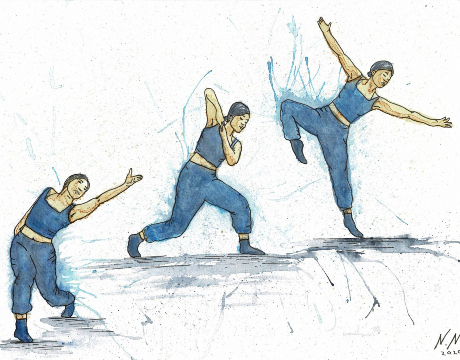Lauren-Frances Wood's Project
Conscious and Subconscious Qualities of Movement
Dear Members of the Fordham Community,
You may have noticed in your time at Fordham that there is a batch of students who stand out from the crowd. They live different lives than most; they operate differently and move differently. They start their days early and end them late at night. However, they are not unlike the rest of the student body; they have great hopes, and they have great fears. They are talented, intelligent, hardworking, ambitious, and creative, and everyday they face their dreams and their nightmares. They are our dancers.
Unfortunately, we are not together on campus and I must ask you to think of what quarantine means for our dancers. If you ask the dancers what dance means to them in the middle of COVID-19, they will say that dance is something we need now more than ever but cannot have. It is heartbreaking, and I am sure all of you have experienced a measure of this in your own ways.
However, I am not here presenting my ARS Nova project to dwell in this uncomfortable uncertainty. I am mentioning it so that a deeper more fulfilling meaning or fullness can be experienced while observing the dancers and their work in my research project. Seeing what they have to say about a medium that gives them peace during a time where peace is hard to find, I hope comforts and inspires you.
The objective for my project was to uncover the driving forces behind these dancers and their qualities of movement. I wanted to see what I could find when asking the question: how much of a dancer’s quality of movement is conscious and how much is subconscious? I cared less about a literal measurement and more about a description of the dancer’s experience.
Instead of giving the dancers material to learn, I asked them to improvise so that I could get a genuine quality of movement from each of them. I did not want them worrying about how a step “should” look. I composed a document of tasks for them with instructions to improvise and to respond with a description of their honest experience. I had them repeat these tasks to get plenty of material and to get them comfortable with the exercise.
At the end, I asked the dancers to write a final reflection on the experience as a whole and respond to a prompt. The work and words that you will see belong to these dancers: Natalie Ng, Leila Bershad, Maddy Runyon, Bianca Cosentino, and Naya Hutchinson. The only credit I will take is that of asking for their trust in presenting their work. The results are remarkable, and I am thoroughly impressed with my fellow dancers not only with their dancing but with their written responses. What I received and have learned from them can be seen in accompanying videos and read in the following paragraphs. My question about consciousness and subconsciousness failed to encompass the complexity of a dancer’s mind to body connection. Yet, it unlocked one of potentially many ways to describe the complexity with words.
The responses revealed that the dancers enjoyed their work and their experiences the most when they felt free from limits, expectations, pressures, or labels. Yet, they had to mentally get themselves to a level of comfort before they pushed their edges of comfort and let themselves get swept away in the moment. They progressed from beginning in a conscious and concentrated state to a state of freedom, but each experience was unique to the dancer. In this free state, the conscious mind let go of controlling every action and thought.
Ultimately, what I see is that the dancers let themselves listen to their hunger for expression. If it was turning away from overthinking that they felt they needed, they let themselves. If it was exploring another motivation to inform expression, then they let themselves. If it was to get past the “I have to be a great dancer” mindset, then they let themselves. I see these results as a win for my research.
I learned that this work was less about exact answers and more about carving out comfort and freedom for oneself and giving others space to do the same. Beyond the research that I present this project is a message from our dancers, an ode to dance, and a reminder that art will thrive once again at our campus in New York City and our school, Fordham University.
Much love and loyalty,
Lauren-Frances Wood
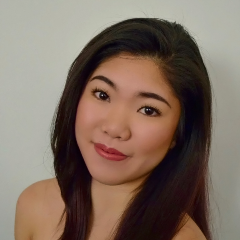
Natalie Ng
“I’m going to be blunt. I don’t even like to improv. It’s just not something I’m always comfortable with. A lot of improv consists of making choices. How do you want to move? What feels right in this current moment? I’m not sure if every step is a conscious decision. As dancers, we can just move. Sometimes I find myself following how my body naturally wants to move without putting in much thought. Sure, that can be considered a subconscious reaction. But that reaction was initially driven by some internal thought or emotion. For a more meaningful improv, there needs to be a purpose behind the improv. That can be as simple as the joy I feel when listening to ABBA, or it could just be the exploration in my silent improv. I think music definitely helps because you are responding to something external while also expressing something internal. There needs to be some internal driving force in the improv because we don’t improv for purely aesthetic purposes. So while I may not consciously choose every single step when I improv, improv, at least for me, still stems from some conscious thought or emotion.”

Leila Bershad
“I think generally, music is super powerful in informing a dancer’s movement - whether or not they are familiar with the song. The instant a song comes on, it establishes some sort of feeling and mood in the space, and it becomes almost impossible to avoid. On some level, that mood infuses the movement and even if one is consciously choosing steps to execute, it rarely feels dejected from the music. That influence also seeps in on a conscious level because, as we get more familiar with the sound, we inevitably start selecting movement that either complements or goes against the music. There is also a desire in dancers to want to be in control of what movement they are producing. Improv allows the option of relinquishing that control and also of finding a balance between the conscious and subconscious responses in one’s dancing - which are very individual to each mover. I think the piece of music at hand dictates the answer to this question. Getting to improv through this variety of tasks really allowed me to feel the difference in what I was experiencing each time, which was super exciting and also very eye-opening.”
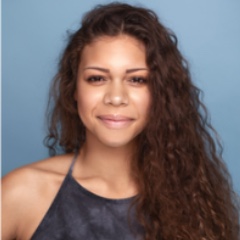
Bianca Cosentino
“Initially, a dancer consciously puts emotion into every step. They want to have a strong start and they want to do all the moves they know look best on them. Within 30 seconds into improving, they let themselves respond subconsciously to the mood of the music and the emotions it evokes. Otherwise, if a dancer consciously puts emotion into every step they would be so cluttered with thoughts of what to do next that they would get stuck. The dance would either repeat moves or not move at all because they are just thinking. Movement is constant, improv is constant, and a song is constant until it ends. Like music, movement can slow down or speed up but it should never stop until there is a definitive end. It should be fluid.”
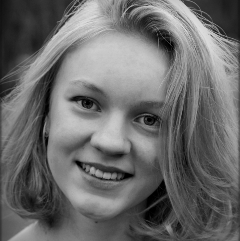
Maddy Runyon
“Based on these improv sessions I would at least say that music is where a dancer’s emotional/movement quality begins. I think part of the dancer’s job is to be conscious about their response to the music, but for me that consciousness was more about shaping the response I naturally had, than about deciding how I was going to respond. Improvising is about listening to yourself and responding intuitively to your environment. For me, music is so emotionally impactful that “putting emotion” into steps is mostly a question of getting out of my head, listening to the music, and being responsive to it. There could easily be...a situation in which there is music but it contradicts the tone of the choreography. In those cases you have to draw emotion from something—the movement itself, the context of the dance, a personal experience—so the “raw material” comes from somewhere other than music...contrast like that between music and movement, or silence and movement, is generally outwardly oriented, and more for the visual impact on the audience than the personal experience of the dancers.”
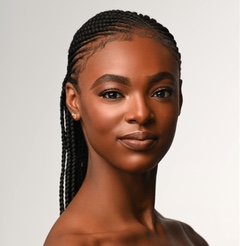
Naya Hutchinson
“Overall, I really liked improving to silence and I think I’ll begin to do it more often. My experience with this was therapeutic. I felt more comfortable being able to tell the story that was happening in my head than having it dictated by a rhythm or music. I found my breath something that helped me through the awkwardness of it being silence at first. I danced to Beyonce’s “Before I Let Go!” Overall, the experience was out of my comfort zone in terms of pace and energy. It completely took me out of the usual improvisation that my body likes to do. [Then] I chose to move to Truth Hurts by Lizzo! This was my favorite prompt to dance to because it allowed me to think freely and be free in my movement. I didn’t find myself getting distracted by the lyrics of the rhythm of this song even though it was upbeat. I liked doing my improvisation to this song the most because I felt it provided with a foundation to play with but not have to follow. Overall, I enjoyed exploring my body and how it likes to move to different types of music.”
View Conscious and Subconscious Qualities of Movement (ARS Nova Project 2020)
